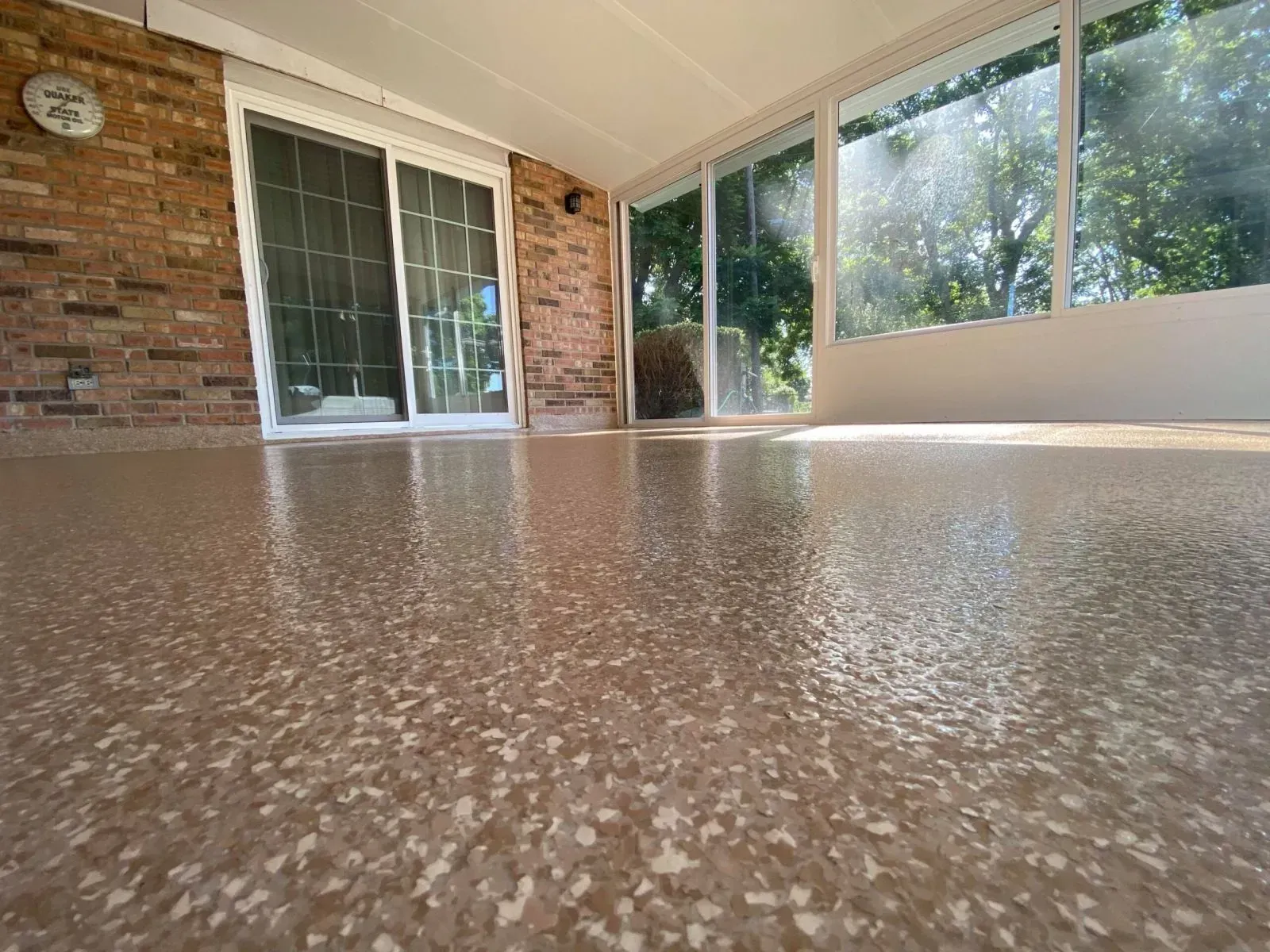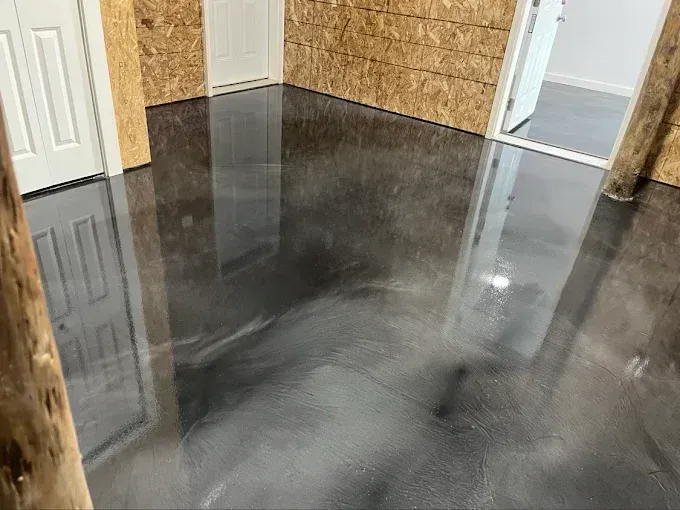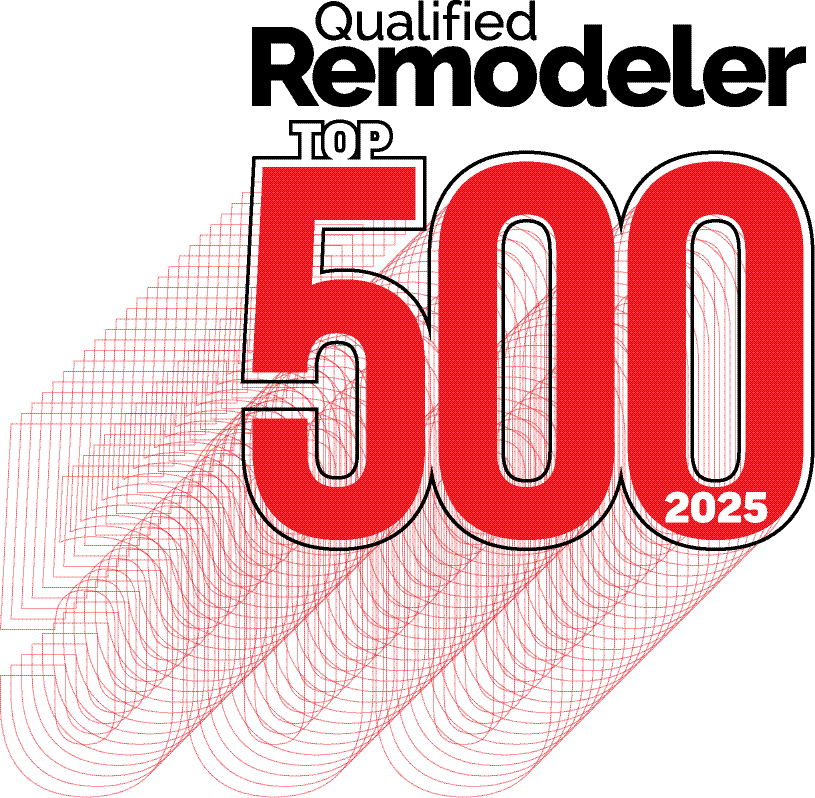How Long Does Epoxy Coating Last?
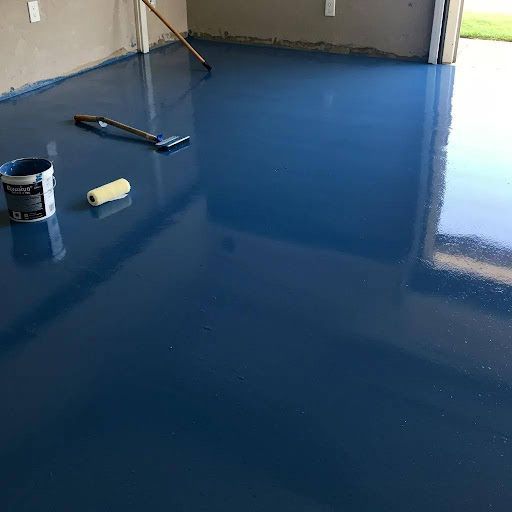
Epoxy lifespan varies by chemistry, substrate, traffic, and environment. Residential settings see longer life due to lighter use; industrial settings face heavy abrasion and chemicals, shortening service life.
Application Lifespan Ranges
- Residential garage: 10–20 years (light traffic, controlled environment).
- Driveway (outdoor): 5–12 years (UV exposure, freeze/thaw; requires UV-stable topcoat).
- Commercial retail: 7–15 years (moderate foot traffic).
- Industrial/warehouse: 3–10 years (heavy machinery, chemicals).
Epoxy Lifespan in Residential vs. Industrial Settings
Residential epoxy floors achieve longer lifespans due to lower traffic and stable indoor conditions. Industrial environments, with heavy machinery and chemical exposure, accelerate wear, requiring thicker systems or frequent repairs.
Factors for a 10-20 Year Lifespan
Achieving 10-20 years requires high-quality materials, correct thickness, thorough surface preparation, and consistent maintenance, including higher solids epoxy, proper substrate profiling, and moisture testing.
Key Factors Affecting Epoxy Coating Durability
Durability is influenced by UV exposure, traffic, coating thickness, surface preparation, moisture, and material chemistry. Mitigation strategies prevent issues like yellowing or blistering.
Durability Factors and Mitigation:
- UV exposure: Causes yellowing, chalking. Mitigation: Use UV-stable urethane topcoat or polyaspartic.
- Traffic/abrasion: Accelerates wear, scratches. Mitigation: Increase thickness, add aggregate, frequent maintenance.
- Coating thickness: Improves wear and chemical resistance. Mitigation: Specify appropriate mils for expected loads.
- Surface preparation: Poor prep leads to adhesion failure. Mitigation: Use mechanical profiling, moisture tests, and primers.
- Moisture/vapor drive: Causes blisters, bond loss. Mitigation: Conduct vapor emission testing, use moisture-tolerant primers.
How to Extend Epoxy Floor Lifespan
Extend lifespan through proactive maintenance, protective topcoats, timely recoating, and usage controls. Regular cleaning removes grit; protective mats reduce loads. Recoat or repair schedules prevent small failures from spreading.
Essential maintenance practices include:
- Weekly cleaning: Sweep or dust-mop to remove abrasive particles.
- Monthly wet-clean: Use pH-neutral cleaner and a soft scrub.
- Protective measures: Place pads under shelving and mats at vehicle entry points.
- Inspection schedule: Check for chips, blisters, or discoloration.
Essential Maintenance Tips for Epoxy Floors
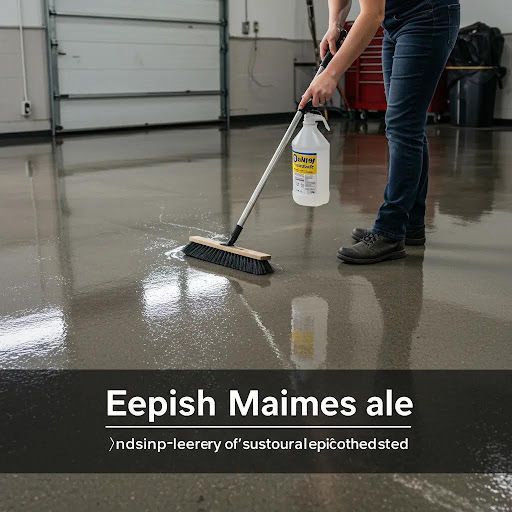
Preserve epoxy with routine cleaning using soft brooms and pH-neutral detergents. Avoid harsh solvents. Implement preventive measures like area rugs. Periodic professional inspections detect issues early, preventing costly full replacements.
Topcoats and Sealers for Improved Durability
Topcoats and sealers offer targeted protection. UV-stable urethane topcoats prevent yellowing; abrasion-resistant urethanes and polyaspartic sealers enhance surface hardness. Choosing the correct topcoat extends both aesthetic appeal and mechanical life, especially in high-UV or outdoor areas.
When to Recoat or Repair Epoxy Coatings
Recoating or repair is necessary when inspections reveal adhesion loss, widespread abrasion, or performance-affecting discoloration. Timing depends on traffic and environmental stress. Spot repairs address localized damage; full recoats are for uniform wear. Regular evaluation is recommended.
Epoxy vs. Polyaspartic Coating Durability
Epoxy and polyaspartic coatings differ in chemistry, UV stability, and cure time. Epoxy offers strong indoor adhesion but yellows under UV without a topcoat. Polyaspartic provides superior UV stability and rapid cure, ideal for exterior applications.
Coating Durability Comparison:
- Epoxy: 5–20 years. Moderate UV stability (yellows without topcoat). Best for indoor garages, basements, and warehouses.
- Polyaspartic: 7–20 years. High UV stability (excellent color retention). Best for outdoor driveways, sunlit garages, and fast-turnover projects.
- Epoxy + Urethane Topcoat: 10–20 years. High UV stability. Best for areas needing epoxy's adhesion with UV protection.
Lifespan Differences: Epoxy vs. Polyaspartic Coatings
Polyaspartic often achieves longer lifespans in UV-exposed environments due to its inherent yellowing resistance. Epoxy excels indoors where UV is limited and chemical resistance is paramount. Selection considers exposure, cure time, and maintenance.
UV Stability Differences: Epoxy vs. Polyaspartic
Polyaspartic coatings boast superior UV stability and color retention. While epoxy can be protected with a UV-stable urethane topcoat, polyaspartic often simplifies long-term aesthetic maintenance for exterior applications. Prioritize a UV-stable solution for sun-exposed areas.
Best Coating for High-Traffic or Outdoor Areas
For indoor high-traffic industrial floors, high-build epoxy or epoxy with a urethane topcoat is robust. For outdoor or sun-exposed high-traffic zones, polyaspartic coatings offer fast cure and UV stability. Choose based on interior heavy-duty needs versus exterior sunlight and quick turnaround requirements.
The Bottomline
Epoxy lifespan (5-20 years) depends on application, materials, and maintenance. UV, traffic, and thickness are key. Epoxy suits indoors; polyaspartic excels outdoors. Regular care and topcoats maximize durability.
Ready for a More Durable Floor?
Discover how GatorGuard can transform your space with a long-lasting, high-performance floor coating.
Contact us today!

